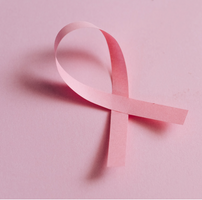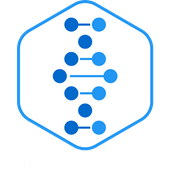
RORY WILKINSON I PHARMACOLOGY CONSULTANT I CIRCAGENE
Firstly... A bit of context
Breast Cancer is the world’s most common cancer. In 2020 there were around 2.3 million women globally who were diagnosed with the illness, leading to 685,000 deaths (1). Furthermore, it is estimated that in the UK, a staggering 1 in 7 women will be diagnosed with breast cancer during their lifetime, highlighting the extreme prevalence of this harmful disease (2).

Figure 1. UK breast cancer prevalence (2)
What is it so common?
Well, it turns out that for breast cancer in particular, there are numerous common risk factors which increase the possibility of developing the disease, such as sex, aging, oestrogen levels, genetic mutations, lifestyle and family history (3). It is thought that the relatively frequent occurrence of some of these risk factors, particularly within the female population is responsible for the unusually high prevalence of this type of cancer. For example, it has been calculated that breast cancer occurrence is 100 times higher in women than it is in men, as a result of these risk factors (4).
The development of breast cancer emerges within the lining cells of the ducts in 85% of cases or in the lobules in 15% of cases, within the glandular tissue of the breast. The cancerous growth at least initially, is restricted to this duct or lobule, resulting in minimal symptoms and posing minor potential for spread (metastasis) (1). However, overtime as the cancer growth progresses into the surrounding breast tissue and nearby lymph nodes and other bodily organs (regional and distant metastasis), the cancer then becomes dangerous. This progression and metastasis of the cancer leads to downstream
The development of breast cancer emerges within the lining cells of the ducts in 85% of cases or in the lobules in 15% of cases, within the glandular tissue of the breast. The cancerous growth at least initially, is restricted to this duct or lobule, resulting in minimal symptoms and posing minor potential for spread (metastasis) (1). However, overtime as the cancer growth progresses into the surrounding breast tissue and nearby lymph nodes and other bodily organs (regional and distant metastasis), the cancer then becomes dangerous. This progression and metastasis of the cancer leads to downstream
The exact method of treatment is highly dependent on the type of breast cancer, how developed the cancer is, and how far the metastases have spread. Having said that, listed below are the most popular methods of treatment, it is also worth highlighting that often these treatment methods are used in conjugation with one another, depending on the particular breast cancer case.
SURGERY – The different types of breast cancer surgery include:
• Mastectomy - The entire breast is removed during surgery.
• Lumpectomy – A portion of the breast tissue is removed.
• Surgery to remove nearby lymph nodes.
• Reconstruction of the breast following a mastectomy procedure (6).
Chemotherapy – Is a method of therapeutic treatment usually taken orally or through direct injection into a vein, which is used to directly target and destroy breast cancer cells.
WHEN CHEMOTHERAPY CAN BE USED:
• Chemotherapy can be used as a primary treatment if the cancer has spread to other areas of the body and therefore cannot be operated on.
• Chemotherapy can be used prior to breast cancer surgery (neoadjuvant therapy), in order to shrink the tumour as much as possible and provide the surgeon with the best chance of fully removing the cancerous area.
• Chemotherapy can also be used following surgery (adjuvant therapy), in order to destroy any undetected cancerous cells that may have been left behind within the breast tissue (7).
Hormonal Therapy – Hormones in the body are used to naturally regulate the growth of normal cells. However, in many cases these hormones (particularly oestrogen and progesterone) can stimulate the growth of abnormal breast cancer cells, as shown in the diagram below.

Figure 2. The effect of oestrogen binding on cell division in breast cancer (8)
Hormone therapy works by either reducing the levels of progesterone or oestrogen in circulation or reducing the effectiveness of these hormones, therefore reducing the growth stimulation of these breast cancer cells (8).
Biological Therapy – The idea around biological therapy is to essentially use your own body’s immune system to help destroy cancer cells. Your immune system effectively fights against external bugs, germs and viruses, however because cancer cells are very similar to normal host cells, our immune system sometimes struggle to recognise them as a threat. Biological therapy works by either inducing our immune system to attack cancer cells or making the cancer cells more recognisable for our immune system to target. Due to the fact that this type of therapy harnesses our own natural immune system to destroy the cancer, biological therapy often has fewer side effects in comparison to more toxic alternative drug regimens (9).
Radiation Therapy – This methodology works by harnessing high energy radiation to destroy cancer cells and reduce the size of cancerous tumours. The therapy itself is thought to be painless and is often used after breast cancer surgery (much like adjuvant chemotherapy) in order to kill off any remaining cancer cells and reduce the chances of the tumour returning. Radiation therapy can alternatively be used in non-operatable breast cancers as well as in cases where the cancer has spread to other areas of the body (10).
Now you might be thinking, how does all this link to genetic testing? Well, an important factor to appreciate when looking at the success rates of cancer treatments, is how early the cancer was detected. This has a huge influence on how developed the cancer has become and also how far the potential metastases have spread, both of which have a huge effect on overall survival rates. Not only do patients with an earlier diagnosis have a broader spectrum of treatment options but it has been calculated that women who are diagnosed with an early stage breast cancer have a 93% survival rate for the first five years (11). Now that we have established that early diagnosis is central to breast cancer survival, the question we must ask ourselves is, how do we bring about earlier detection?
Particular genetic mutations can have a huge influence on the chances of developing breast cancer. The most common and dangerous genetic mutations are those found in the BRCA1 and BRCA2 genes. Women with a mutation in either of these genes can have up to a 70% chance of developing breast cancer by the time they’re 80 (12). Furthermore, up to 25% of all hereditary breast cancer cases are caused by a single mutation in one of the ‘highly penetrant’ genes (BRCA1, BRCA2, PTEN, TP53, CDH1 & STK11), illustrated in Figure 3 below (13).

Figure 3. High - prevalence genetic mutations and their associated breast cancer risk, data utilised from (13)
CircaGenes new Cancer Prevention Kit utilises next generation sequencing technology and advanced bioinformatics to provide a service which can test individuals for all the most prevalent and dangerous mutations that are linked to both breast cancer and cancer in general. Genetic testing for these specifically dangerous mutations can provide us with a much-needed head start in our fight against breast cancer. If we can make those susceptible individuals aware of their predisposition to this highly prevalent illness, then not only can they assess, lifestyle changes or surgical options to remove particularly susceptible areas of breast tissue. They can also be on the lookout for any relevant symptoms, in order to provide them with the best chance of catching the illness early. Maybe something they would not have considered or been aware of, before knowing their breast cancer predisposition.
It is apparent that with high breast cancer survival rates being heavily associated with early detection, being aware of your breast cancer predispositions and therefore catching breast cancer early is the answer to surviving this deadly disease. Genetic testing and in particular CircaGene’s new Cancer Prevention Kit, provides a unique opportunity to get ahead of the curve in this fight against the world’s most common cancer.
References
1. Breast cancer [Internet]. Who.int. 2021 [cited 15 October 2021]. Available from: https://www.who.int/news-room/fact-sheets/detail/breast-cancer
2. Breast cancer risk [Internet]. Cancer Research UK. 2021 [cited 15 October 2021]. Available from: https://www.cancerresearchuk.org/health-professional/cancer-statistics/statistics-by-cancer-type/breast-cancer/risk-factors#heading-Zero
3. Sun Y, Zhao Z, Yang Z, Xu F, Lu H, Zhu Z et al. Risk Factors and Preventions of Breast Cancer. International Journal of Biological Sciences. 2017;13(11):1387-1397.
4. Siegel R, Miller K, Jemal A. Cancer statistics, 2017. CA: A Cancer Journal for Clinicians. 2017;67(1):7-30.
5. How Does Breast Cancer Start & Spread? | NBCF [Internet]. National Breast Cancer Foundation (NBCF) | Donate Online. 2021 [cited 15 October 2021]. Available from: https://nbcf.org.au/about-breast-cancer/diagnosis/breast-cancer-anatomy/
6. Breast cancer surgery - Mayo Clinic [Internet]. Mayoclinic.org. 2021 [cited 15 October 2021]. Available from: https://www.mayoclinic.org/tests-procedures/breast-cancer-surgery/about/pac-20385255
7. Chemotherapy for breast cancer - Mayo Clinic [Internet]. Mayoclinic.org. 2021 [cited 15 October 2021]. Available from: https://www.mayoclinic.org/tests-procedures/chemotherapy-for-breast-cancer/about/pac-20384931
8. Hormone therapy for breast cancer | Cancer Research UK [Internet]. Cancerresearchuk.org. 2021 [cited 15 October 2021]. Available from: https://www.cancerresearchuk.org/about-cancer/breast-cancer/treatment/hormone-therapy
9. Biological therapy for cancer - Mayo Clinic [Internet]. Mayoclinic.org. 2021 [cited 15 October 2021]. Available from: https://www.mayoclinic.org/tests-procedures/biological-therapy-for-cancer/about/pac-20385261
10. Radiation Therapy for Breast Cancer Treatment: Types, Side Effects and More [Internet]. Breastcancer.org. 2021 [cited 15 October 2021]. Available from: https://www.breastcancer.org/treatment/radiation
11. Early Detection is Key | Carol Milgard Breast Center [Internet]. Carolmilgardbreastcenter.org. 2021 [cited 15 October 2021]. Available from: https://www.carolmilgardbreastcenter.org/early-detection
12. Breast Cancer Risk Factors You Cannot Change | Genetic Risk Factors [Internet]. Cancer.org. 2021 [cited 15 October 2021]. Available from: https://www.cancer.org/cancer/breast-cancer/risk-and-prevention/breast-cancer-risk-factors-you-cannot-change.html
13. Shiovitz S, Korde L. Genetics of breast cancer: a topic in evolution. Annals of Oncology. 2015;26(7):1291-1299.

COPYRIGHT © CIRCAGENE LTD ™ ALL RIGHTS RESERVED